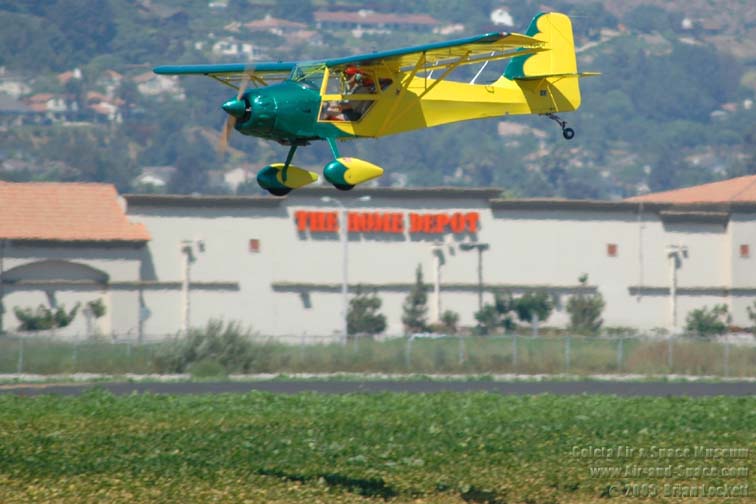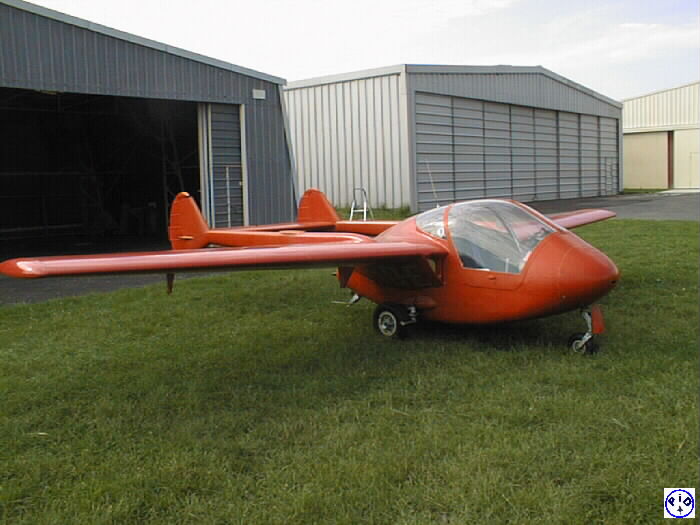B
Bar
Guest
VL Viima I & II
Viima I and II were two-seat mixed structured bi-plane primary trainer aircraft with fixed undercarriage. The type was developed to replace Smolik primary trainers. Prototype of the aircraft was ordered on 7 Feb, 1935 and the first flight was performed on 11 Jan, 1936. The second prototype flew for the first time on 12 Oct, 1937. The ministry of Defense ordered 20 Viima IIs on 27 June, 1938. They were ready in July-Dec, 1939. 2 additional Viimas were donated to Air Force and one was bought by the Air Force in 1953.
Jan, 1936 - Sep, 1962
VI-11.
Numbers: Prototypes: VI-1 (Viima I) & VI-2 (Viima II)
II: VI-3...-23
IIB: VI-40 (=24)
VI-2 was sold and registered as OH-VIB on 2 July, 1960. It was cleared from the register as scrapped on 2 Dec, 1968.
VI-3 was sold and registered as OH-VIG on 20 Aug, 1963. It was cleared from the register on 9 Apr, 1970, sold to UK and registered as G-BAAY. Later it was sold to Belgium and registered as OO-EBL.
OO-EBL painted to the camo of the Viimas used as liaison aircraft during the Continuation War. Photo: Peter Strackx, International oldtimer fly-In, Belgium.
Destroyed VI-4 and VI-14 were used as Veljekset Karhumäki Oy built OH-VKS (type IIB), registered on 26 Sep, 1951. It was sold and re-registered as OH-VIA on 20 Jan, 1960. It was cleared from the register as scrapped on 14 July, 1964.
VI-5 was sold and registered as OH-ILM on 15 Aug, 1939. It was impressed between 14 Oct 1939 and 26 Sep 1941. It crashed in Jämi on 13 Aug 1945. The wreck was taken to Veljekset Karhumäki Oy who re-built the aircraft and registered it as OH-VKJ on 7 Jan, 1948. It was re-engined in 1951 (type IIB) and sold to Air Force that registered it as VI-40.
VI-12 was sold and registered as OH-VIH on 28 June, 1965. It was cleared from the register as withdrawn from use on 3 Dec, 1974.
VI-13 was sold and registered as OH-VIC on 7 July, 1960. It was cleared from the register as scrapped on 4 Dec, 1967.
VI-15 was sold and registered as OH-VIE on 26 Oct, 1960. It was cleared from the register as scrapped on 5 Feb, 1969, but is currently under restoration at Finnish Aviation Museum.
VI-16 was sold and registered as OH-VIJ on 27 July, 1964. It crashed in Kuortane already on 19 March, 1966 and was cleared from the register.
OH-VIJ in early 1960's in Kauhava after a minor taxiing accident. Photo: Pentti Salo's archive.
VI-17 was sold and registered as OH-VIF on 17 May, 1961. It was cleared from the register as scrapped on 12 May, 1969. The aircraft is under restoration.
VI-21 was sold and registered as OH-VII on 24 June, 1963. It was cleared from the register on 23 Feb, 1989 and placed on display at Finnish Aviation Museum.
VI-23 (ex-OH-ILN) was sold and registered as OH-VID on 18 July, 1960. It was cleared from the register as scrapped on 8 Apr, 1970.
Average/Maximum total flight time: 3373 h / 5571 h 15 min
Armament:
Engine/Propeller: I and II: Siemens Halske Sh 14 A4 7-cylinder, air-cooled star-engine/wooden propeller
IIB: Blackburn Cirrus Major III, reversed, 4-cylinder, air-cooled in-line engine
Power: Halske: 150 hp
Cirrus: 155 hp
Max speed: VI-1: 177.5 kph
II: 186 kph
IIB: 215 kph
Climb/Ceiling: VI-1: 3,000 m - 34 min
2,000 m - 15 min/3,700 m
Range: VI-1: 665 km (4 h 18 min)
776 km (5 h 57 min)
Wing span/area: VI-1: /27.6 sq. m
9.2 m/20 sq. m
Length/Height: 7.35 m/2.73 m
Empty/Max weight: VI-1: c. 600 kg/980 kg
551 kg/875 kg

Viima I and II were two-seat mixed structured bi-plane primary trainer aircraft with fixed undercarriage. The type was developed to replace Smolik primary trainers. Prototype of the aircraft was ordered on 7 Feb, 1935 and the first flight was performed on 11 Jan, 1936. The second prototype flew for the first time on 12 Oct, 1937. The ministry of Defense ordered 20 Viima IIs on 27 June, 1938. They were ready in July-Dec, 1939. 2 additional Viimas were donated to Air Force and one was bought by the Air Force in 1953.
Jan, 1936 - Sep, 1962
VI-11.
Numbers: Prototypes: VI-1 (Viima I) & VI-2 (Viima II)
II: VI-3...-23
IIB: VI-40 (=24)
VI-2 was sold and registered as OH-VIB on 2 July, 1960. It was cleared from the register as scrapped on 2 Dec, 1968.
VI-3 was sold and registered as OH-VIG on 20 Aug, 1963. It was cleared from the register on 9 Apr, 1970, sold to UK and registered as G-BAAY. Later it was sold to Belgium and registered as OO-EBL.
OO-EBL painted to the camo of the Viimas used as liaison aircraft during the Continuation War. Photo: Peter Strackx, International oldtimer fly-In, Belgium.
Destroyed VI-4 and VI-14 were used as Veljekset Karhumäki Oy built OH-VKS (type IIB), registered on 26 Sep, 1951. It was sold and re-registered as OH-VIA on 20 Jan, 1960. It was cleared from the register as scrapped on 14 July, 1964.
VI-5 was sold and registered as OH-ILM on 15 Aug, 1939. It was impressed between 14 Oct 1939 and 26 Sep 1941. It crashed in Jämi on 13 Aug 1945. The wreck was taken to Veljekset Karhumäki Oy who re-built the aircraft and registered it as OH-VKJ on 7 Jan, 1948. It was re-engined in 1951 (type IIB) and sold to Air Force that registered it as VI-40.
VI-12 was sold and registered as OH-VIH on 28 June, 1965. It was cleared from the register as withdrawn from use on 3 Dec, 1974.
VI-13 was sold and registered as OH-VIC on 7 July, 1960. It was cleared from the register as scrapped on 4 Dec, 1967.
VI-15 was sold and registered as OH-VIE on 26 Oct, 1960. It was cleared from the register as scrapped on 5 Feb, 1969, but is currently under restoration at Finnish Aviation Museum.
VI-16 was sold and registered as OH-VIJ on 27 July, 1964. It crashed in Kuortane already on 19 March, 1966 and was cleared from the register.
OH-VIJ in early 1960's in Kauhava after a minor taxiing accident. Photo: Pentti Salo's archive.
VI-17 was sold and registered as OH-VIF on 17 May, 1961. It was cleared from the register as scrapped on 12 May, 1969. The aircraft is under restoration.
VI-21 was sold and registered as OH-VII on 24 June, 1963. It was cleared from the register on 23 Feb, 1989 and placed on display at Finnish Aviation Museum.
VI-23 (ex-OH-ILN) was sold and registered as OH-VID on 18 July, 1960. It was cleared from the register as scrapped on 8 Apr, 1970.
Average/Maximum total flight time: 3373 h / 5571 h 15 min
Armament:
Engine/Propeller: I and II: Siemens Halske Sh 14 A4 7-cylinder, air-cooled star-engine/wooden propeller
IIB: Blackburn Cirrus Major III, reversed, 4-cylinder, air-cooled in-line engine
Power: Halske: 150 hp
Cirrus: 155 hp
Max speed: VI-1: 177.5 kph
II: 186 kph
IIB: 215 kph
Climb/Ceiling: VI-1: 3,000 m - 34 min
2,000 m - 15 min/3,700 m
Range: VI-1: 665 km (4 h 18 min)
776 km (5 h 57 min)
Wing span/area: VI-1: /27.6 sq. m
9.2 m/20 sq. m
Length/Height: 7.35 m/2.73 m
Empty/Max weight: VI-1: c. 600 kg/980 kg
551 kg/875 kg




















